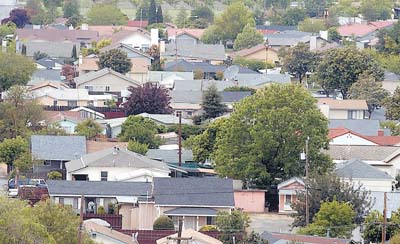Local resident and developer John Eade contends that amendments
to the San Benito County Code capping residential growth at 1
percent annually have been void since 2002.
”
I believe it has expired,
”
said Eade, who made his argument recently to the board of
supervisors.
”
I’ve been looking at this for quite a while … Everything I see
is that it expired six years ago.
”
HOLLISTER
Local resident and developer John Eade contends that amendments to the San Benito County Code capping residential growth at 1 percent annually have been void since 2002.
“I believe it has expired,” said Eade, who made his argument recently to the board of supervisors. “I’ve been looking at this for quite a while … Everything I see is that it expired six years ago.”
Since Eade’s contention came to light, county officials have been researching the topic, said Supervisor Jaime de la Cruz, the board chairman.
“It will be relayed when it is done,” he said.
County Administrative Officer Susan Thompson pointed out that there was another amendment to Chapter 31 signed in 2002.
In 2002 version of the amendment to the law, there was an addition that calls for periodic review. The chapter states: “Two years after the adoption of this Chapter, and every two years thereafter, the Planning and Building Department shall prepare and present a report to the Planning Commission and the Board of Supervisors on the status of the growth management system.” In both the 2000 and 2002 amendments, this is the only information about a renewal.
County planning official Art Henriques admitted that reviews for many county projects have not been a regular occurrence while citing lack of personnel. He added that the county now has a more standardized approach to the review process. As far as he can tell, he said, “(the growth management ordinance) does seem to be an active, ongoing program.”
“Mr. Eade thought it was adopted as an interim program.”
In a fax to Thompson on Sept. 3, Eade explains that the ordinance signed in 2000 was an interim ordinance and lasted only 45 days, and can only be extended for a maximum of two years. He further explains that supervisors could have used other methods to control growth, including passing Measure G.
“I want them to prove to me that this thing is not expired,” said Eade.
The board of supervisors will have a meeting at 1:30 p.m. Oct. 7 to further discuss this topic.









